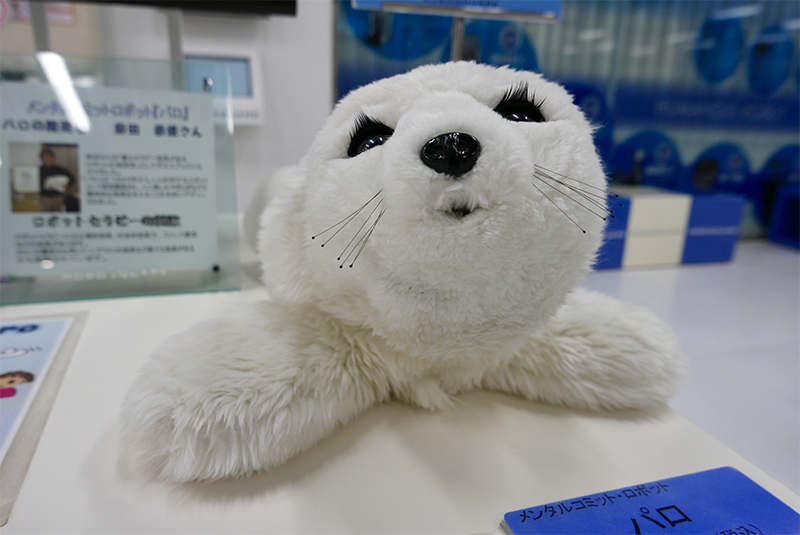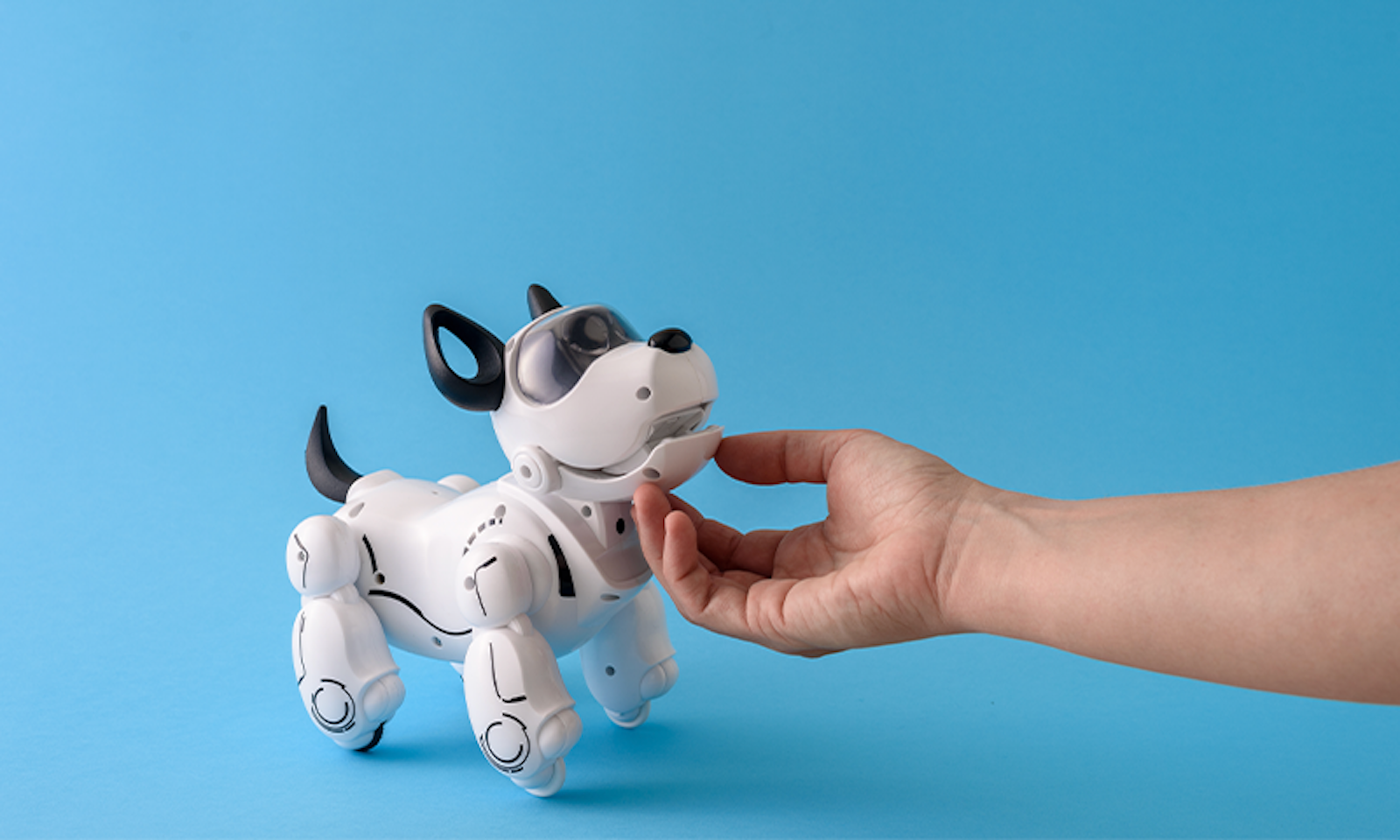Research on hugging robots shows us that how robots touch us matters, but what about how we touch them? Recently, I was given a tour of Chelsea and Westminster Hospital in London as part of a new research study I’m undertaking. For those who do not know, Chelsea and Westminster Hospital is an amazing place! It’s unlike any hospital I’ve visited before. Part of the reason for this is that it was developed with the arts and a sensory connection to the environment in mind. There are over 2,000 artworks in the hospital’s collection, including some by world-renowned artists Tracey Emin and Julian Opie. All are carefully exhibited, with the addition of indoor gardens and cinemas to bring the hospital to life.
My tour did not just take in the fantastic design of the hospital. It also enabled me to hear firsthand about some of the great new technologies that staff are working with to support patients in healthcare settings. One that stuck with me was the robotic companion pets: a dog-like pet called Miro and a seal-like pet called Paro.
Remarkably, research has shown that when people interact with these types of robotic companions, they can experience reductions in anxiety, blood pressure, and pain. This pattern of results has tended to be found when focusing on specific vulnerable groups, such as older people in residential care. For instance, a 2013 study led by researchers from the University of Auckland compared the blood pressure of elderly residents before, during, and after interacting with Paro. Paro is modeled on a Canadian harp seal and is covered in white fur.1 People in the study would stroke and touch it, and Paro responded by moving and making the noises of a baby seal. You might even say it acted as a virtual pet would.
The consequences of the experiment were fantastic. The elderly residents were more relaxed. They also had lower blood pressure when interacting with the seal.

We know that animal companions can be good for people’s stress and well-being. Robot seals might provide an elegant solution to bring those types of benefits to people who cannot have furry companions in their lives.
It also turns out that robot companions don’t necessarily need to be furry to bring benefits to wellness. Even engaging with plastic robot dogs can reduce loneliness in elderly participants living in care homes. Researchers from Saint Louis University School of Medicine examined the effects of interacting with a living or robotic dog on levels of loneliness. (The robotic dog in this study was an Aibo robotic dog, not to be confused with the Miro dog that I encountered at Chelsea and Westminster Hospital: Robot dogs come in different breeds, too!)
Both the living dog and the robot dog contributed to improvements in older adults’ levels of loneliness. Remarkably, there was no statistical difference in loneliness improvement between those who interacted with the real dog and those who spent time with the robotic dog. A finding that I’m feeling strangely offended by, though that might be out of loyalty to the family dog, Loki, who is snoozing by my feet as I write this!
Putting Loki’s feelings aside, we know that having pets can benefit well-being and loneliness. Access to a real-life pet is not always possible, especially for elderly care-home residents. These findings offer an intriguing possibility for alleviating loneliness in older people. ![]()
Excerpted from Touch Matters: Handshakes, Hugs, and the New Science on How Touch Can Enhance Your Well-Being by Michael Banissy. Published by Chronicle Prism. Copyright © 2023 by Michael Banissy.
Lead image: Molenira / Shutterstock
Footnote
1. I was told that a harp seal was used instead of a dog to avoid people getting distracted by the likeness of the robot to an animal that they may have met in the real world. I suspect most of you will have had fewer encounters with a real-life harp seal than a real-life dog.
































